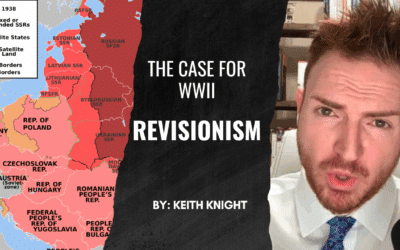The use of drugs is sometimes characterized as a victimless crime, since the person who ingests them will bear the negative consequences should something go awry. Supporters of prohibition, who wish for the government to regulate and limit sales and distribution, are typically concerned with not only the moral effects on individuals themselves but also what might be called the “collateral damage”: the family and community members affected by the user who succumbs and loses “the plot” of his life, so to speak. This concern with “collateral damage,” however, applies to drug (including alcohol) use more generally, whether or not the substance in question is illegal. In fact, as both Prohibition and the War on Drugs illustrate, the crimes committed by users and suppliers multiply in tandem with laws enacted to prevent people from obtaining the substances which they wish to ingest.
If no one in the United States who sold drugs was committing a crime, then there would be no witnesses to worry about and possibly eliminate. There would be no need for armed cadres of contract killers to deal with the rival gangsters attempting to control sales over makeshift domains. No one would be in prison for drug possession or sales, including the parents of children rendered homeless or wards of the state as a result. The purchase of drugs would be rendered safer for consumers themselves, who would no longer have to gamble in deciding which criminal to patronize, having no idea what the source of the substances was and whether and with what they may have been cut. When drug use is criminalized, addicts in search of a needed but expensive (because illegal) fix may be driven to commit other crimes, generating even more collateral damage, only because of the illegality of drug use. It may seem axiomatic to libertarians that laws create crimes, but all of these empirical hypotheses, previously tested by the Prohibition, have been more recently confirmed by Portugal in the years since 2001, when the government of that country decriminalized recreational drug use.
The drug scene has transformed significantly over the course of the past three decades, as a result of the sudden appearance and spread of synthetic substances. Throughout much of the twentieth century, most of the street drugs which people were peddling had natural origins: marijuana, hashish, cocaine, opium, morphine, heroin, et al., are all derived from plants. LSD (lysergic acid diethylamide) is a potent synthetic drug, but it is not addictive and, aside from the hippie era, it has never been as popular as any of the aforementioned natural drugs. Today, however, for reasons peculiar to the explosion of synthetic drug production in the late twentieth century, including the never-ending quest of pharmaceutical companies to discover and market profitable molecules, many popular street drugs, too, are synthetic. Drug trends come and go, but among the substances which have taken off in recent years, fentanyl stands in a class all its own. Fentanyl is not only inexpensive to produce but also highly addictive and so potent that even a tiny dose can be deadly. At first glance, it might seem to some that the fentanyl crisis itself constitutes a cogent argument for prohibition. Nothing could be farther from the truth, as an examination of the etiology of the current overdose epidemic reveals.
The use of fentanyl as a synthetic heroin surrogate became widespread after millions of people became addicted to prescription pain medications such as Vicodin, Hydrocodone, and Oxycontin, and turned to the streets for their needed fixes. Because fentanyl is fifty times stronger than most other opioids, dosing is a delicate undertaking, to say the least. Carfentanil, an even more potent derivative intended for administration to large animals such as elephants, has also circulated in illicit supplies, and because it is one hundred times more potent than fentanyl itself, it is much more lethal as well. Twenty-six people were killed on August 15, 2016, in Huntington, West Virginia, by a supply which had been cut with carfentil, unbeknownst to any of those who ingested a toxic dose on that day.
The grand irony of the raging opioid epidemic, which accounts for the record number of overdoses being surpassed with each new year (in 2021, the number exceeded 100K), is that, judging from the testimony of many addicts themselves, it was the regulatory apparatus itself which ended up transforming ordinary people, who had never (or rarely) used recreational drugs before, into addicts. The profligate prescription of powerful time-release narcotics created addicts not only directly, but also indirectly, as the diversion of legally prescribed pills became a significant phenomenon. Some people pilfered pills from family members and friends, either to counter pain, or for recreational use. Many patients to whom pills were directly prescribed discovered that they were addicted upon the depletion of their initial supply. Having built up a tolerance to the drug, those patients’ need came to exceed what they were able to procure through a regular medical prescription. “Doctor shopping” became widespread, with addicts visiting multiple offices to secure multiple prescriptions and thereby have enough drugs to make their lives tolerable.
The more pills addicts needed, the more money they needed, which naturally led to an increase in diversionary sales. During this period, pain clinics opened up in many states, doling out prescriptions to anyone for virtually any reason, with prescriptions pre-signed and ready to hand out to the regular users who paid cash for them and came back again, and again, and again…The more addicts there were, the more people—both addicts and nonaddicts—began to capitalize on the free-flowing drugs as a source of income.
Some persons who had been prescribed narcotics after surgery, or because of work-related injuries or other accidents, lost their health insurance when they ultimately lost their jobs (in some cases because of their addiction), and turned to the streets for their supplies. While some users died directly from overdosing on their prescribed pills, many others died when they sought to satisfy their dependency by purchasing pills of unknown provenance. As the opioid crisis became recognized for what it was, a widespread effort ensued to prevent people from procuring prescription painkillers. Tragically, this led to even more addicts resorting to drug dealers for their needed fix.
In many thousands of overdose deaths throughout the twenty-first century, fentanyl has been the culprit, reflecting in some ways the methanol dynamics witnessed during the Prohibition, when ignorant (or insouciant) people began producing, selling and imbibing repurposed but inadequately purified industrial alcohol, which had been cut with methanol, a toxic substance. Longterm use of ethanol can of course result in poor health, especially liver disease, and premature death, but methanol is immediately poisonous. Analogously, fentanyl is now used to cut or even entirely to substitute for the narcotics sought by addicts, with the result that users have no idea what the proper dosage will be when they probe for a vein or swallow a mystery pill. The situation is analogous to playing Russian roulette, but instead of there being one bullet in the gun’s chamber, now there are five.
It has been known for centuries, by cultures the world over, that opiate drugs are highly addictive and that resisting dependency has less to do with personal character and willpower and more to do with initial avoidance and abstinence. Today, the physiological mechanism of addiction is well understood: the brain’s reward system is effectively hijacked, causing the user to seek out the intense pleasure delivered by the drug at any and all costs. Having once become dependent on the drug, it becomes necessary in order for the addict not to feel unbearably ill and even to function normally.
A film which realistically portrays the difficulty of the struggle which all narcotics addicts face is The Man With the Golden Arm (1955), directed by Otto Preminger and starring Frank Sinatra. The protagonist’s addiction is referred to in the film as “a monkey on his back,” always there, threatening to take over his life again, even after he seems to have kicked the habit. The Panic in Needle Park (1971), directed by Jerry Schatzberg and starring Al Pacino, portrays the desperate life of heroin addicts in New York City. Despite having been produced decades ago, The Man with the Golden Arm and The Panic in Needle Park are every bit as telling and relevant as the more recent Requiem for a Dream (2000, directed by Darren Aronofsky), which, too, shows how people from all walks of life can easily succumb to addiction. An abundance of nonfictional cautionary tales also exist, including a long list of celebrity overdose deaths.
Given recent history, it may seem self-evident to those who persist in supporting prohibition that legalization would obviously increase the number of drug users and, consequently, overdose deaths. There is an abundance of evidence, however, that the misleading depiction by regulators themselves of time-release opiates such as Oxycontin as “safe” and “nonaddicting” persuaded many people not otherwise inclined to use those drugs to do so indiscriminately. Indeed, it was the quest of the pharmaceutical industry to maximize sales which gave rise to an entire pro-opioid prescription movement among licensed medical professionals.
What was already the widespread cultural awareness of the danger of opioid drugs had to be actively suppressed in order to convince doctors to begin promiscuously to prescribe narcotics, not only to terminally ill patients, for whom longterm addiction would never be a problem, but also to persons suffering from pain caused by arthritis and other chronic but not deadly conditions. Despite centuries of historical evidence that opiates are extremely dangerous, the longstanding prejudice against such drugs, their derivatives and synthetic surrogates, was effectively surmounted by the companies selling them, an impressive marketing feat accomplished through the seduction of doctors themselves, under the supposedly vigilant eyes of the FDA (Food and Drug Administration).
Many of the people who died from methanol poisoning from 1920 to 1933 would have lived longer if the Prohibition had never been imposed. Similarly, and ironically, the addicts whose lives were ultimately destroyed by prescriptions provided by their doctors were persuaded to believe that the large bottles of narcotics which they held in their hands were safe. But the problem in the case of opioids was not that the drugs were illegal, but that the victims themselves came to believe that because they were prescribed by their doctor, they should take them. Having once emptied their prescription supply, many of them found themselves in need of more. They initially trusted that the drugs must be safe because it is a doctor’s first duty to Do No Harm.
Anecdotally, I can report that in 2006, after a minor knee surgery, I was prescribed a huge amber vial—the largest I’d ever seen—of Vicodin. I ended up using only six of the pills, but had I emptied the bottle, I, too, might have found myself addicted, along with thousands of others who did. My other short foray into narcotics use occurred during the Coronapocalypse, in March 2020, when I was convalescing (having been infected with COVID-19 by friends who visited from Spain) in the mountains of Austria. Once my visitors felt healthy enough to travel again, they returned to Spain, leaving me with a bottle of codeine syrup to quell my cough—a clear case of “illegal diversion for medical use.” The syrup helped me to get badly needed sleep, but I chose not to take it every night—only when my cough was especially bad. (I have since learned that codeine is far less addictive than other narcotics, but my rationing still ended up working to my advantage, as it allowed me to stretch the supply over the course of my six-week illness.)
Persons less prudent than I am may be inclined to infer, out of misplaced reverence for their physicians, that they should empty their prescription bottles on a rigorous schedule, and that appears to be what led to addiction in so many cases of opioids legally prescribed. The behavior of the well-meaning patients rendered addicts was in some cases the result of habits developed during childhood, when they were regularly told that they needed to finish their course of antibiotics in order to rid themselves of their bacterial infection. Each story is obviously unique, and many will never be told, as they followed their protagonists to the grave. But by now there exist enough published addiction memoirs by survivors to constitute a genre. These works, which are both confessional and informative to various degrees, are written by people who have experienced first hand the reality of addiction and hope to warn others of the dangers of the drugs to which they succumbed.
We can uphold the ideal of personal responsibility championed by libertarians while still acknowledging, with the benefit of hindsight, that the most plausible explanation of the current overdose epidemic is not that opioids were prescribed legally but that they were sanctioned as safe and non-addicting by trusted medical authorities and organizations such as the FDA. Because the bulk of Purdue Pharma’s profits derived from Oxycontin, that company is often singled out for having gone above and beyond in promoting the use of prescription narcotics. Purdue and the Sackler family may be regarded as the evil corporate face of the opioid epidemic, but many other companies (Johnson & Johnson, Merck, et al.,) profited from their efforts as well. The entire pharmaceutical industry’s pro-pill agenda was promoted by the public ad campaign to “Make narcotics prescribable to everyone in pain!” Purdue’s many pain seminars and conferences, held in luxury vacation settings and offered free to thousands of doctors, increased the use of opiate sales for all manufacturers of those drugs. Most importantly of all, in this mad rush to prescribe powerful narcotics for any and everything, all of the pharmaceutical industry’s aggressive marketing ploys enjoyed the imprimatur of the FDA.
The solution to the problem of the millions of drug addicts now inhabiting the United States cannot be prohibition, as they will head directly to the streets for serial rounds of extraordinarily dangerous Russian roulette. Pretending to care for these people by providing them with “kits” to help them to “safely” utilize illicit drugs of unknown provenance and composition is patently absurd. Given the current reality of fentanyl-cut illegal supplies, to do this is to send many people to their graves. Instead, the pharmaceutical industry-captured government agencies which misled patients into believing that even extremely potent painkillers were safe should be held accountable and correct the record, widely publicizing the truth about the highly addictive nature of narcotics.
Ultimately, only decriminalization will decrease overdose deaths, by providing addicts with the possibility of being able to find safe and legal ways to taper off their drugs. The people already addicted who wish to turn their lives around need to be offered the moral support of their fellow community members, not stigmatized and punished as criminals. In contrast to prohibition, informing young people that narcotics are highly addictive, and recommending books and films which clearly illustrate the dangers of such drugs, is a morally worthy approach to preventing the creation of a new wave of addicts.
Anyone, from anywhere on the ideological or political spectrum, should be persuaded by the ghastly consequences of the Prohibition and the War on Drugs that policies which harm more people than they help cannot possibly be moral. The criminalization of recreational drug use has severely degraded countless persons’ lives by incarcerating them for lifestyle choices, but it has also killed many people, a fact which becomes more difficult to ignore with each passing day, as the toll of overdose victims continues to mount. Both utilitarian and libertarian arguments for the legalization of drugs are compelling, but the story of the opioid crisis has a broader moral, for it reveals that faith in bureaucrats is misplaced. In truth, they are every bit as cooptable and corruptible as are citizens at large, an insight already appreciated by those who favor limited government.
Viewed from a broader perspective, the “fentanyl argument” for legalization in fact constitutes an argument for libertarianism itself. For we can see clearly in this case how regulators harmed rather than helped many of the people who became addicts and ended up dying because they trusted their government to keep them safe, when in fact they should have been wary of everything that their FDA-tutored doctors said. The current overdose epidemic illustrates not that drugs should be criminalized but that people need to be more self-reliant and less dependent on government bureaucrats. When people are guided by the government in making decisions about their own life, they find themselves all alone at the end of the day, left to cope with the consequences of the choices they made, even when they were misled by the government and in fact followed its laws. This same lesson has been learned by every soldier who enlisted to fight a war touted by his government as “just” and whose life ended up being wrecked as a result of what he was lured into doing.
It is often said by libertarians that morality cannot be legislated, and the same is true of prudence. Free people will do what they choose to do. Their risk-benefit analysis is based on the information available to them and their personal preferences, which are forged by the historical contingencies of their life. Rational people do not freely choose to forsake their freedom, and, judging by the testimony of addicts themselves, to succumb to narcotics dependency is in some sense to render one’s self a slave. But the peculiar toxicity of fentanyl and its current prevalence in illicit supplies effectively guarantees that many narcotics addicts driven to the streets for their needed fix will end up dead as a result. There was a time when drug addicts constituted a small fringe subset of society, but with more people today dying from overdoses than in automobile accidents, this is no longer the case.
The moral of the fentanyl overdose epidemic story is not that prescription opioids should never have been legally prescribed, nor that advertising should be prohibited, but that individual patients should be more vigilant as they consider which course of treatment to undergo. They should seek out multiple opinions and do independent research before ingesting any substance. They should begin with the assumption that government bureaucrats, like all human beings, are fallible persons with selfish interests and goals, who may or may not have any idea what they are doing, and may or may not have financial interests at stake. No one should succumb to the illusion that doctors are deities, and least of all when they occupy politically appointed positions in government agencies. Persisting with the counterproductive policy of prohibition will foreseeably kill many more human beings, effectively executing them for having made a mistake which any one of us could have made.
















